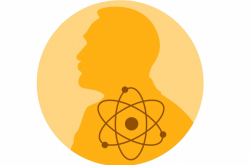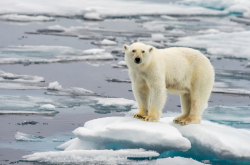There’s no doubt that the average temperature of the Earth is rising. Last year, 2017, was one of the top three warmest years in the last 137 years. The average temperature of the planet last year was 0.9 degrees Celsius higher than during 1951 to 1980. However, the question remains whether global warming is a result of human activity or not. Most likely it is: 97% of scientists agree that the cause is due to greenhouse gas emissions, a result of pollution from factories and transportation, among other causes.
However, based on the evidence prepared by NASA, it is clear that in the last 400,000 years the emissions didn’t exceed a certain level, and since 1950 it has increased sharply by 30%. Scientists agree that the increased amount of greenhouses gases prevents the heat created on Earth which is a result of natural and unnatural processes, to dissipate into space, as it once did. This is because gases dissipate heat in all directions including to the surface. This creates a greenhouse effect. Regardless, the temperature is increasing and, according to scientists, the likelihood of it continuing is 90%.

What is one degree Celsius? It doesn’t seem like much. However, these changes have been taking place over 150 years, and it’s a huge shift in the climate. Over the millennia, the temperature of the air changed, of course, but these changes occurred because of small deviations in the Earth's rotation axis, known as “precessions”, and it was not so sudden. Such drastic changes as the current one, however, threaten to destroy entire ecosystems.
Effects of Climate Change
Fluctuations in the Northern Hemisphere polar jet stream have increased significantly since the 1960s, which has led to an increase in extreme weather in Europe: heat waves, droughts and floods. Scientists from the University of Arizona conducted a study which managed to catalogue these anomalies starting from 1725. They did this by analysing the annual rings of trees.
“Shifts” in air flow in the South and North have been taking place over 300 years, however in the second half of 20th century, it has been happening with increased frequency and speed. When these “shifts” took place in the North, the Northern and Western European summers had unusually high temperatures, and in the south and east there was severe flooding. Accordingly, when the shifts happened in the South, the situation changed vice versa.
Scientists emphasize that the increase in the frequency of these “shifts” can lead to even more serious consequences in weather change and affect human civilization. However, in order to understand whether these “shifts” are directly connected to climate change, it’s important to analyse the changes in the North Atlantic flow over a much longer period of time, at least one thousand years. Modern discoveries of well-preserved trees from the past can allow scientists to continue their research.
Another study, also published this month, explained how the temperature in the Arctic increased to over 0 celsius in the winter of 2015-2016. Then, the temperature in some Northern latitudes reached up to eight degrees; such temperatures have never been recorded since the monitoring began in 1970s. It turned out that the perpetrators of the event were three air currents which met over the North Sea. One of them came from the Sahara! It’s an incredibly rare phenomenon, explained the scientists. Even more surprising is that the second wind current appeared in the Arctic itself, but completed its journey around the earth over the Atlantic and warmed up from the ocean’s heat fluxes. The third current arose over the Arctic, but at an altitude of about 5 kilometres.
The researchers stressed that they have not studied whether these exceptional weather conditions are connected to global warming. However, the problem of melting ice in the Arctic is real: the thickness and volume of the ice has been quickly decreasing over the last 40 years, with the largest periods of decline in 2017 and 2012. Scientists from the University of Bergen found one of the reasons, and it’s connected to the fact that the air flows from temperate latitudes get into the atmosphere over the Arctic at a height of 8 km. The result is a pressure difference, meaning that, on one out of three days, there are no clouds over the Arctic. This leads to excess solar radiation, and accordingly, the melting of ice. Research shows that climate conditions in moderate latitudes affect the climate of the northern part of the earth, but no direct correlation with global warming has been made.

Changes in nature related to global warming
Changes in plant and animal diversity
Due to climate change, extremely dry or humid regions are likely to appear, as well as regions with constantly changing weather, which are all likely to affect plant diversity. Scientists from Tübingen University (Germany) observed, over a period of 16 years, the vegetation in one of Spain’s national parks near Barcelona. In the drier years, practically all wet adapted species disappeared from the park and there was an increase in the dry loving species.
Changes in vegetation also contribute to changes in the animal world. For example, Finnish and Australian researchers noted that animals dependent on specific foods are the first to become threatened. For example, lemurs from Madagascar eat mainly bamboo leaves. But in periods of drought they may temporarily survive on bamboo stems. If dry periods last longer, lemurs will starve and may become extinct.
Less bees means agricultural crisis
Remember the episode of “Black Mirror” where only artificial bees flew around? This wasn’t a “made-up” issue. Scientists have noticed that the number of different species of bees are declining. Why is this happening? One of the reasons that scientists from Florida State University have identified is due to Spring starting early and thus the flowering season starting earlier. It would seem that an extended flowering season would increase the number of bees, however, early flowering means that the variety and abundance of flowers during the summer are lower because many plants wither earlier. As a result, those species of bees that live to the end of the summer will not be able to produce healthy offspring. Why is it dangerous? The fact of the matter is that bees are an essential element of the planet’s agriculture, as they pollinate plants.
Lack of fish may lead to food scarcity

Researchers from the University of Washington conducted lab experiments with nearly 500 species of fish that reside in medium, tropical and northern latitudes. The scientists tried to understand to what extent fish can tolerate an increase in water temperature. The results are not encouraging: fish that live in the tropical and extreme north regions of the planet are already in a high risk zone, as the temperature of their environment is approaching a critical level. It is said that if these species can’t quickly adapt, they will simply die. Moreover, an increase in ocean temperature will lead to the reduction of fish by 70%, Canadian researchers have concluded. This may be due to the fact that global warming will cause a lack of oxygen in the oceans, and, in order to survive, marine life will have to shrink in size: the smaller the bodies, the less oxygen they require.
Increase in volcanic activity
At the University of Geneva, it was assumed that the increase in volcanic activity in the Mediterranean region about six million years ago was associated with a sharp drop in the sea’s water level. The scientists noted that because of this, the pressure level in the crust of the earth changed, which affected magma activity. What has this got to do with global warming? The researchers say that the current drought and erosion, caused by increasing temperatures and weather disasters, can have a similar effect, that is, pressure increase in the depths of the planet. This is also confirmed by scientists from the University of Leeds, based on the example of volcanic activity in Iceland during a colder period about 4.5 - 5.5 thousand years ago. There was a growth in glaciers and volcanic eruptions became less frequent. If eruptions start happening more often, this can lead to a closed cause and effect loop: the more eruptions, the warmer the climate, and the warmer the climate, the more eruptions. At the same time, the oceans will no longer be able to serve as a “cooling” factor.

Effects on humans
The world bank predicts that as a result of natural disasters, agricultural issues and the spread of certain diseases, humanity will face increased poverty. Thus, agriculture could be reduced by 30% in 2080, which is not a great forecast given that the Earth’s population will continue to grow. The number of people with a high risk of contracting malaria will increase by 5%, and diarrhoea 10%. Higher temperatures can lead to the growth of infectious diseases like Zika, since these climatic conditions are favorable for breeding mosquitoes, the carriers of the virus.
In addition, changes in temperature, unexpected natural phenomena (like the Sahara winds that reach the Arctic) can affect high-tech advantages of human civilization. For example, climate change can significantly affect the flow of air at the altitude commonly used by passenger planes. As a result, turbulence increases year after year, and the air flow becomes less stable, according to a report by the American Geophysical Union. It is expected that the number of cases of extreme turbulence, in which people are ejected from their seats, and baggage falls from shelves, will grow substantially by 2050.
Thus, right now, it’s already necessary to develop tools for predicting turbulence, as well as other tools for dealing with global warming. Since it is believed that the main cause is greenhouse gases, the world’s resources are now focused on R&D that can solve this problem. However, if this doesn’t help, humanity will have to adapt quickly or maybe, like in the movie “Interstellar”, seek other worlds.





